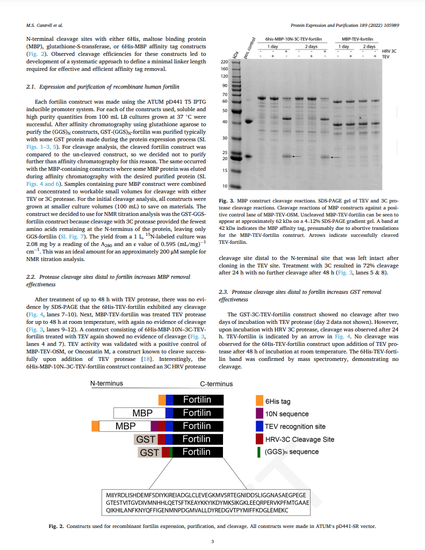
Complications related to atherosclerosis account for approximately 1 in 4 deaths in the United States and treatment has focused on lowering serum LDL-cholesterol levels with statins. However, approximately 50% of those diagnosed with atherosclerosis have blood cholesterol levels within normal parameters. Human fortilin is an anti-apoptotic protein and a factor in macrophage-mediated atherosclerosis and is hypothesized to protect inflammatory macrophages from apoptosis, leading to subsequent cardiac pathogenesis. Fortilin is unique because it provides a novel drug target for atherosclerosis that goes beyond lowering cholesterol and utilization of a solution nuclear magnetic resonance (NMR) spectroscopy, structure-based drug discovery approach requires milligram quantities of pure, bioactive, recombinant fortilin. Here, we designed expression constructs with different affinity tags and protease cleavage sites to find optimal conditions to obtain the quantity and purity of protein necessary for structure activity relationship studies. Plasmids encoding fortilin with maltose binding protein (MBP), 6-histidine (6His) and glutathione-S-transferase (GST), N- terminal affinity tags were expressed and purified from Escherichia coli (E. coli). Cleavage sites with tobacco etch virus (TEV) protease and human rhinovirus (HRV) 3C protease were assessed. Despite high levels of expression of soluble protein, the fusion constructs were resistant to proteinases without the inclusion of amino acids between the cleavage site and N-terminus. We surveyed constructs with increasing lengths of glycine/serine (GGS) linkers between the cleavage site and fortilin and found that inclusion of at least one GGS insert led to successful protease cleavage and pure fortilin with conserved binding to calcium as measured by NMR.

For a complete list of authors, please see the article.